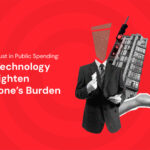In today’s digital-first financial world, trust is the most valuable currency. Customers choose banks, fintechs, and multi-finance institutions not only for competitive rates but also for their reliability and integrity. Once that trust is broken—whether through fraud, money laundering, or mishandled internal reports—rebuilding it becomes an uphill battle.
While many organizations rely on whistleblowing systems (WBS) to identify misconduct, the reality is more complex. Whistleblowing alone cannot fully protect a company’s reputation, especially in industries where compliance and anti-money laundering (AML) are non-negotiable.
The Role and Limitations of Whistleblowing
Whistleblowing systems were created to encourage employees or insiders to report suspicious activities. In theory, this mechanism ensures early detection of fraud, corruption, or misconduct.
However, in practice, these systems often face serious limitations:
- Fear of retaliation: Many whistleblowers remain silent due to concerns about personal safety or career damage.
- Information leakage: In some cases, identities are accidentally or intentionally revealed, eroding trust in the process.
- Reactive nature: WBS detects issues after misconduct happens, not before.
For financial institutions where regulatory pressure is high, relying solely on whistleblowers is risky. That’s where proactive data-driven solutions step in.
From Reactive to Proactive: The Power of AML Watchlist
To move beyond the limitations of whistleblowing, financial institutions must adopt preventive measures. An AML Watchlist is one of the most effective tools to strengthen compliance and protect reputation.
AML Watchlists work by continuously screening names, entities, and transactions against global databases, including sanctions lists, politically exposed persons (PEPs), and adverse media. This allows businesses to identify risky individuals before onboarding them as customers, partners, or vendors.
Unlike whistleblowing, which depends on human courage, AML Watchlists rely on data and automation—making the process consistent, scalable, and less vulnerable to human bias.

How AML Watchlist Strengthens Trust
Trust is not only about avoiding fraud—it’s also about showing regulators, investors, and customers that your institution is serious about risk management. By implementing AML Watchlist screening, companies can:
- Detect early risks: Spot suspicious entities before they enter your ecosystem.
- Stay compliant: Meet local and global AML/CFT regulations efficiently.
- Protect reputation: Reduce the chance of being linked to financial crimes reported in the media.
- Build customer confidence: Clients feel safer knowing their money is managed by a responsible institution.
In essence, AML Watchlists give financial companies the power to protect trust proactively, not reactively.
Beyond Whistleblowing: Building a Multi-Layered Defense
Does this mean whistleblowing systems are irrelevant? Not at all. They remain an important part of corporate governance, especially for uncovering internal misconduct. But when combined with AML Watchlist monitoring, companies create a multi-layered defense.
This defense ensures:
- Human insights + Data intelligence = stronger detection.
- Proactive compliance = fewer regulatory penalties.
- Continuous monitoring = resilience against evolving risks.
Together, these approaches signal to the public and regulators that your institution values integrity above all.
Conclusion: Trust Is Fragile, Protect It Early
In the financial sector, once trust is broken, it rarely returns to its full strength. Whistleblowing systems are valuable, but they should not be the only line of defense. By adopting an AML Watchlist, financial institutions move from a reactive stance to a proactive shield—protecting reputation, ensuring compliance, and most importantly, safeguarding customer trust. Because in finance, reputation is not just an asset. It’s survival.
Integrity starts with prevention. Reach out today to see how ASLI RI’s AML Watchlist helps your business stay ahead of risks.
Last modified: August 21, 2025







